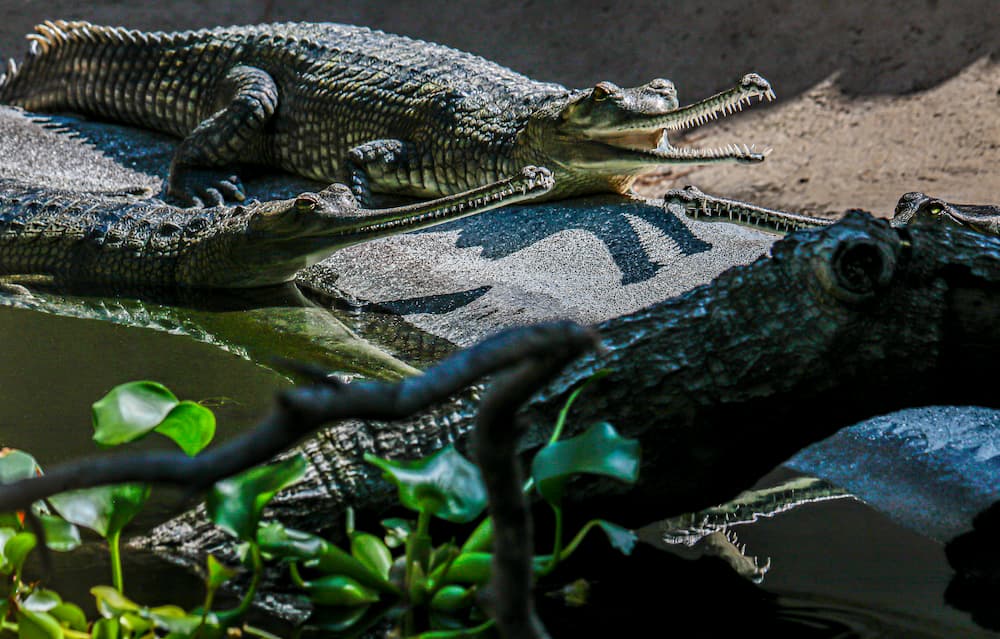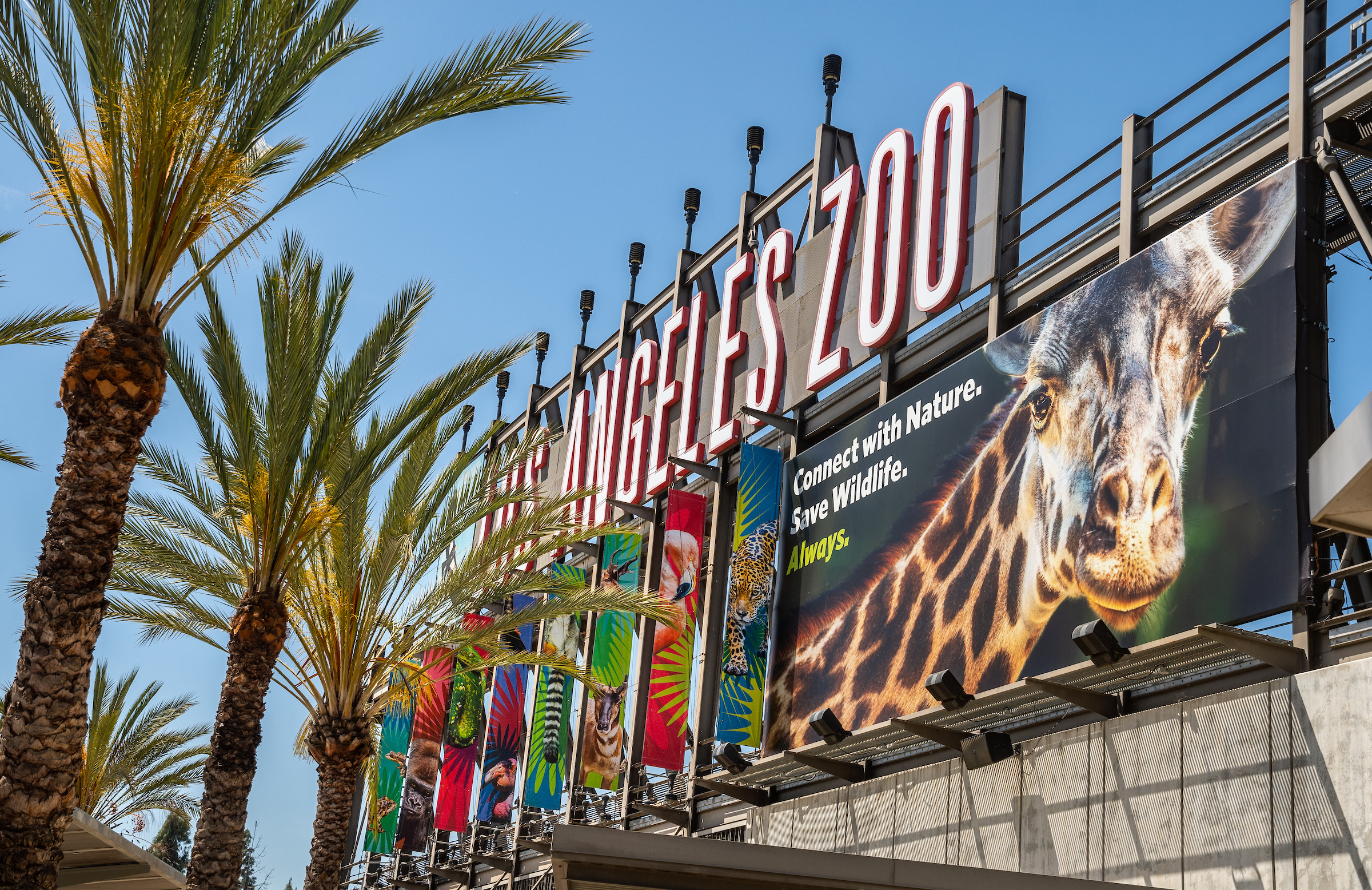“So, what animals do you work with at the Zoo?” is the most common question I hear at dinner parties from eager family and friends. The reality of my job is that I do work with animals—mostly human—creating programs and overseeing the team that engages visitors on-grounds at the Zoo. In the Learning & Engagement division, we diligently stay updated on the work of our conservation field partners, then find creative ways to share these important stories with our guests. For me, helping people make these connections to our work is what drew me into this field and keeps me motivated each day. But since I began working at the Zoo, I’ve had the hope that someday I would be able to visit the sites of our international program partners.
As luck would have it, late last winter, my supervisor, Director of Learning & Engagement Dan Keeffe, asked if I’d be interested in going to India for an exploratory trip with a team from the Zoo to work on our Indian gharial conservation project. Of course, I said, “Of course!”
After my initial excitement and Google Earth-ing all of the locations we were set to visit, a wave of nerves washed over me. Have you ever felt the pressure to perform in your job because people were really counting on you to pull your weight? Me too. But, have you ever felt pressure to perform in your job because hundreds of critically endangered crocodilians and thousands of people could benefit from a project you were asked to be a part of? Me neither! But, it turns out, the feeling of wanting to do right by our Zoo, our partners, the communities we work with, and the animals we care deeply about was a quick way to shed the anxiety, roll up my recently purchased safari-shirt sleeves, and get to work.
For me, getting to work meant diving into the history of the Indian Gharial Recovery Project and researching the decades of work from our partners, the Wildlife Trust of India (WTI). Since 2019, the Los Angeles Zoo has supported WTI through annual conservation grants to locate, protect, and monitor Indian gharial nest sites along the Gandak River in northern Bihar state and to involve local people in the work. In recent years, river flooding has become more extreme due to climate change, causing more disruption to the protected nest sites and highlighting a need for a new solution to aid in the survival of these eggs.

Going into this trip, then, we outlined one main objective: supporting WTI in expanding the Indian Gharial Recovery Program’s efforts through building an incubation center. An incubation center will allow the eggs to be temporarily relocated away from floods until they hatch, ensuring a higher chance of survival. And, we realized, the center could also connect local people to the story of the Indian Gharial Recovery Project. That’s where I and all my experience at the L.A. Zoo came in: working with the WTI team to identify and plan for the development of a community education center to be included in the incubation center.
After a few weeks of diligent preparation and planning, we had our bags packed and were ready for the trip’s anticipated meetings, field visits, and tours. From May 6 through May 19, Dr. Jake Owens (Director of Conservation), Jeromy Chenault (Reptile and Amphibian Keeper), and I traveled around New Delhi and northern India in the state of Bihar, hosted by the WTI team: Dr. Samir Sinha (Joint Director & Chief Ecologist), Dr. Kamalika Bhattacharyya (Assistant Manager, Species Recovery Division), and Subrat Behara (Project Head, Gharial Recovery Project).

During our time in Bihar, we stayed within the Valmiki Tiger Reserve, close to WTI’s Indian Gharial Recovery Project offices. Situated in northern India along a stretch of the Gandak River that separates India from Nepal, this area is part of the foothills of the Himalayas and has the second highest gharial population in the country. The forests there are peppered with Indian sambar, spotted deer, and common langur—and yes, true to its name, there are tigers thriving in the reserve, though the fates didn’t align for us to catch a glimpse of one. Most mornings, we were up and out before 5 a.m. to start the day’s activities before the heat of the day set in. Waking up so early was made considerably easier by the peacocks outside our windows; their pre-dawn calls were a fitting alarm clock for our field adventures.
One morning’s events stood out from the rest. After winding through dozens of villages bustling with children on their way to school and people zipping past on motorcycles, we headed out to our destination site further down the Gandak River. We arrived at the quiet, sandy riverfront, lowered ourselves one-by-one into a cramped red dinghy, and slowly motored along the riverbanks in search of gharials. With the help of Samir and Subrat, expert gharial spotters, we were able to see in the far distance a thin snout poking out of the water, aware of our presence long before we were of it.

We pulled over and climbed onto the riverbanks, stumbling up a steep incline, and walked to an area that, to me, looked just the same as all the other spots on the river, with sparse grasses, scattered rocks, and warm, soft sand. The WTI team stopped abruptly, popped up an umbrella, and began carefully spreading the sand in a small area. After digging for a few minutes, the new hole revealed a dozen perfectly white eggs, hidden a foot or so beneath the hot surface in dark, cool sand. A gharial nest! It was found a few weeks prior to our visit, and the team had been monitoring the site.

We snapped a few photos, then carefully re-covered the nest. I felt incredibly humbled to see something that very few people will ever lay eyes on.

Throughout the rest of the trip, we dreamed about what the future of the gharial project should be. For its best success, this incubation center should be built before the next monsoon season, which will start around this time next year. The community education center needs to be designed, programmed, and built in tandem, and the planning is only just beginning. We have a lot of work ahead of us.
And back at home, I have a lot of work ahead of me. Leveraging our great partnership with WTI, support from the local government officials, and our motivation to help support this population of gharials, I know that we can pull off something really amazing in India that will legitimately support people and animals thriving together.
Until then, when people ask, “so, what animals do you work with at the Zoo?” I’ll feel a great sense of pride in saying, “Well, mostly people, but there are also some Indian gharials about 8,000 miles away that I hope I can have some small impact on someday.”

